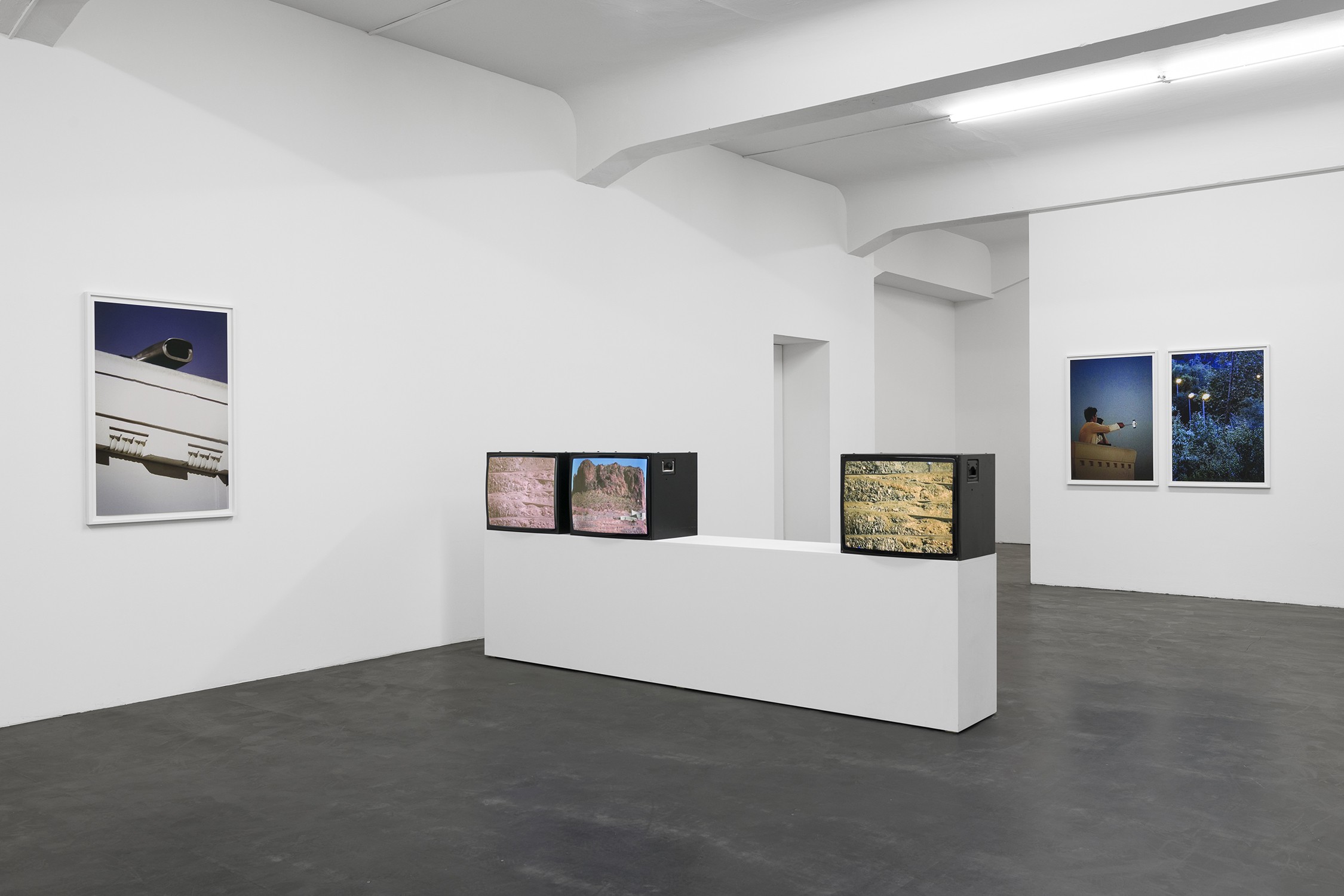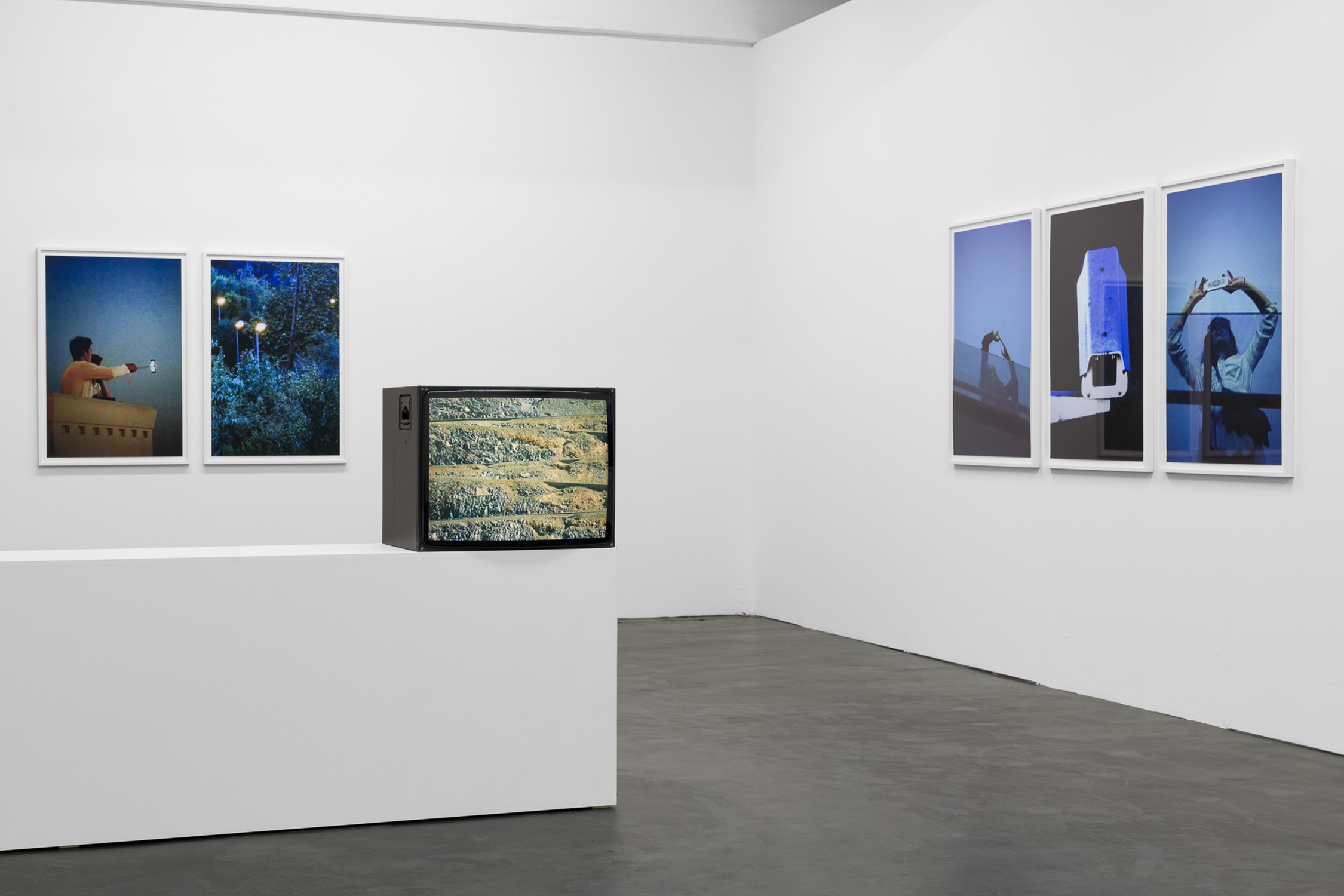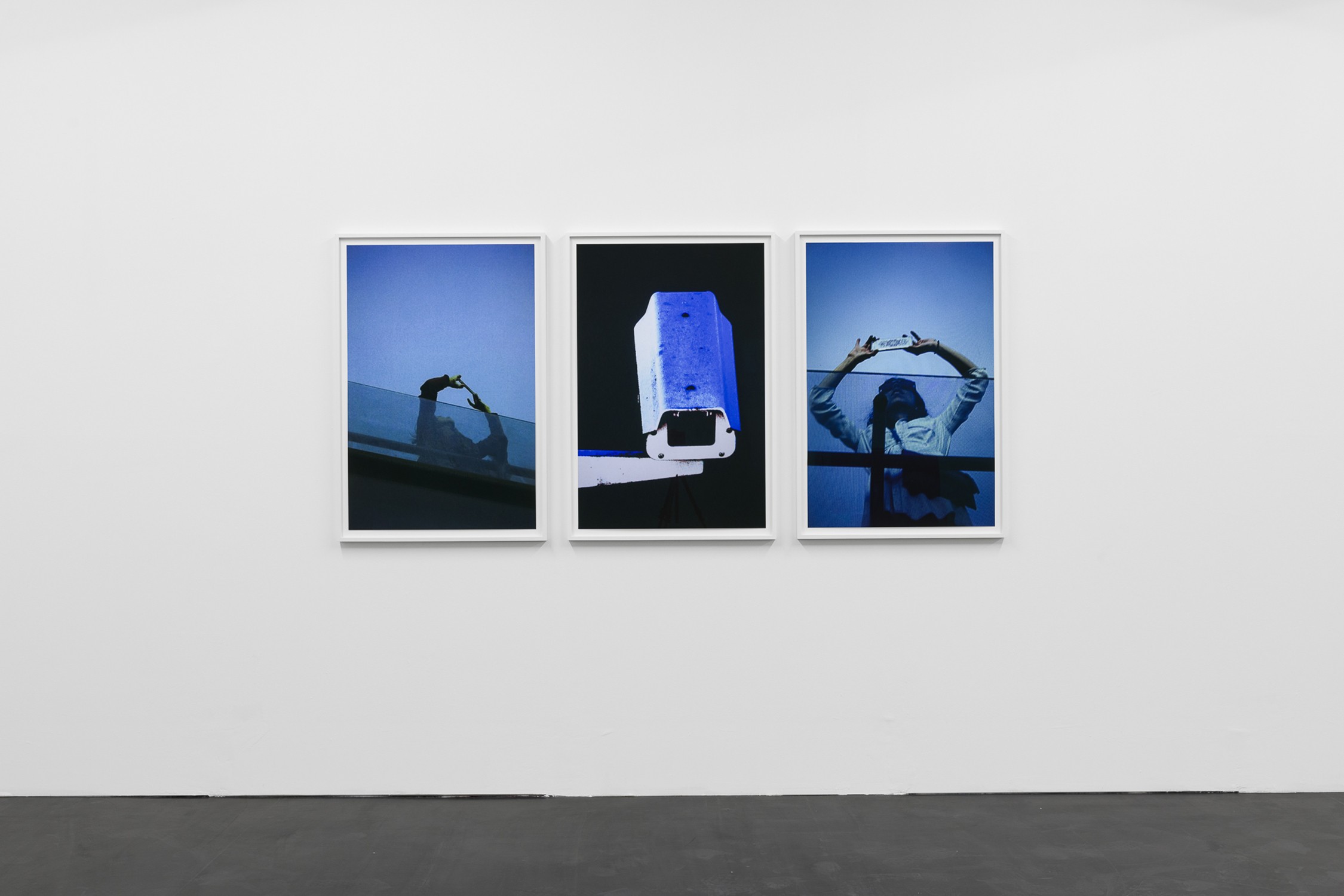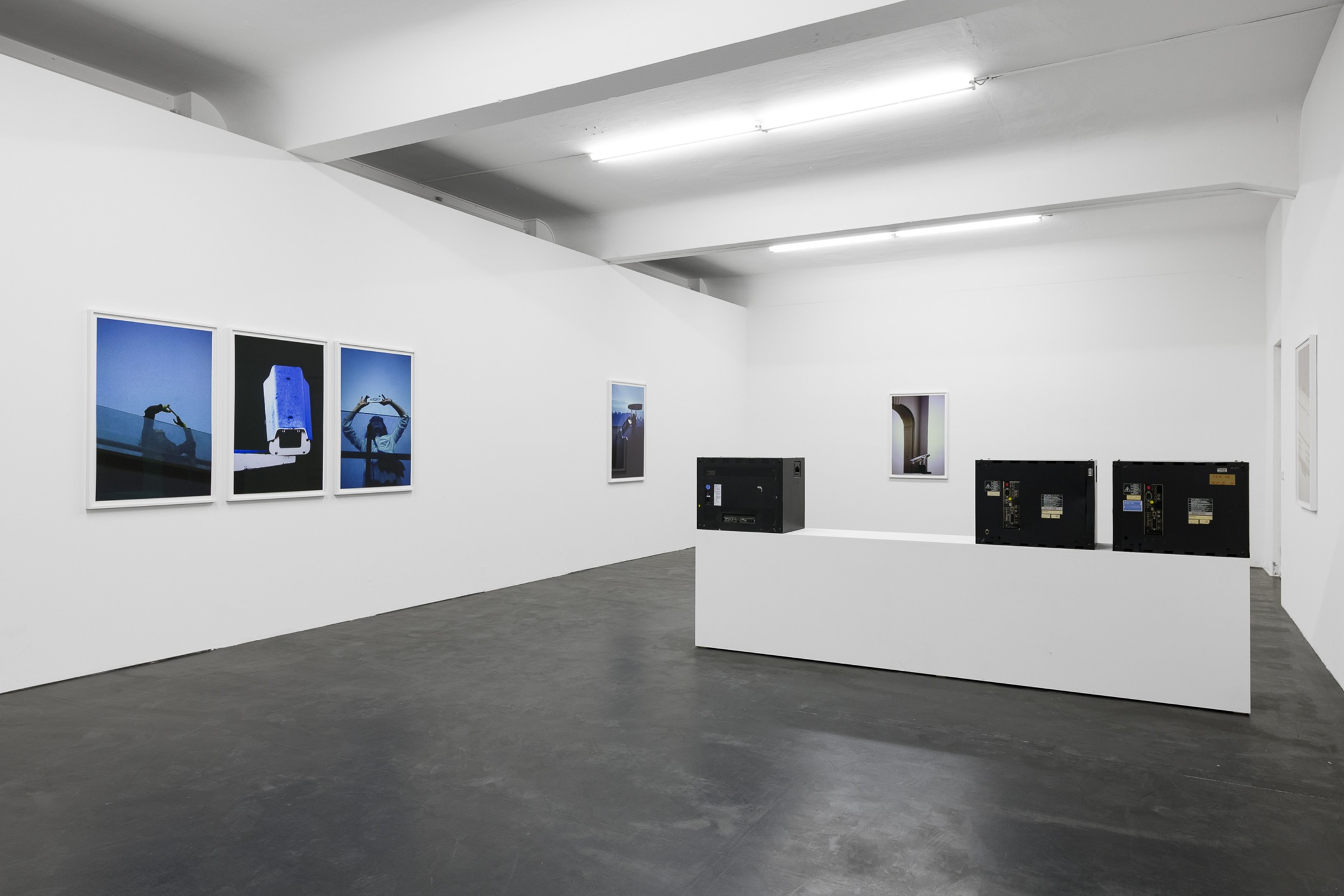





Galerie alexander levy is pleased to present the second solo show of Colin Snapp. The exhibition Observatory once again demonstrates the remarkably strong thematic focus of his work; here he addresses the interaction between tourism, the travel industry, manmade environments and contemporary modes of seeing revealed through his videos and photography.
As the titles of the exhibited work series reveal, NV Regional (2013/17) and Observatory (2018) allude to government regulated tourism. Snapp particularly concentrates on the U.S. American West Coast and looks at the phenomenon of controlled travel from a distanced perspective. He mostly ignores the tourist attractions and sets his focus on the behavior of the tourists, their movements, and clothing, as well as their technical equipment and the visual tools they use to enhance and save their impressions.
The three-channel video installation NV Regional shows a non-edited longtime observation (90 minutes in total) of tourists at the Hoover Dam in Nevada. The scenery leaves an almost extraterrestrial impression: Serpentines cut through the vast land of the Black Canyon creating geometrical formations. Visitors walk slowly along these pathways and move as if directed by an invisible force. An ethereal sound he developed by reworking recordings of the electrical current generated by the dam’s power plants accompanies their progress.
Snapp stresses the repetition of the ever same action and thus alludes to the history of the dam––a masterpiece in the history of engineering build in the 1930’s––while at the same time emphasizing the spiritual character of this steady scenario. He identifies the swarms of tourists as metaphors for the formal connections in the appearance of work and leisure, as well as of wordly and spiritual pleasure. Immersing oneself in the meditative videos and looking at tourists climbing a mountain step by step, images of workers entering a factory and pilgrims cross one’s mind and merge with Snapp’s footage.
The eight exhibited photographs in the series Observatory similarly evoke an other-worldly atmosphere. The majority of the pictures shows telescopes and people taking photos with their smartphones. Portrayed against the blue sky, and with an additional blue glass filter, they gradually start to resemble each other. While people take on cyborg-like features through the elongation of their limbs by electronic devices, the mechanical viewing equipment develops an autonomous life and a certain personality. The images demonstrate how humanity, nature, and technology are increasingly merging, as can be seen particularly in Observatory #5 and Observatory #6: The gesture of a couple raising their glowing smartphone up in the air with a selfie stick seems to be repeated by the street lights illuminating a park.
The backdrop for Snapp’s observations was perfectly chosen: The pictures were taken at the Griffith Observatory in LA. The artist talks about how much “the futuristic and yet nostalgic technology“ he portrayed reminds him of “Star Wars.“ Finally, the people in his photographs–– it is the first time the artist shows humans––also seem to come from another planet.
Both work series appear as studies of unknown tribes or cultures. In this respect, Snapp turns the exhibition itself into an observatory in a broader sense: The viewer, while he only sees details of favorite travel destinations and focuses mainly on the tourists, becomes an observer of the observers. At the same time, the viewer himself is, in turn, targeted when he enters a much-frequented place as a visitor to the exhibition, the gallery. Colin Snapp’s works, in this sense, mark only one moment in the endless and uncontrollable spiral of being watched and photographed while traveling, sight-seeing, or simply looking at art––a notion that is expressed by a certain hint of paranoia in his pictures and videos.
Snapp further reveals another aspect and crucial limitation of traveling nowadays: By analyzing the pictures tourists typically take, he became aware of the fact that it is not only the construction of tourist attractions that prevents individual experience and thus opposes the romantic aim of traveling. The standardized viewing tools and aids such as tinted glass (e.g., used in car windows and sunglasses), smartphone and camera screens, or apps like Instagram also cause a standardized and abstract view that ultimately equalizes impressions, as the artist demonstrates in Observatory.
For years the filtered, multi-layered and pre-fabricated perception determining the traveler’s perspective has been a recurrent motif in Colin Snapp’s artistic practice. In this exhibition, however, this approach is expanded, particularly regarding visual memory: The architecture of the chosen locations seems to provide the perfect backdrop for Snapp’s subtle games with the Sci-fi genre and renders yet another layer determining the tourists’ perspective visible: the Hollywood filter. And so it stands to reason that the artist, who was originally trained as a filmmaker, devotes himself to the Hoover Dam and the Griffith Observatory, both of which served as locations for blockbusters like “The Terminator“ (1984), “Transformers“ (2007) or “La La Land“ (2016).
Text: Lydia Korndörfer
Installation views: Trevor Good